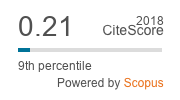Teaching and Testing Procedural Variables in the Construction of Sentences with Comprehension
Keywords:
Stimuli equivalence, Ordinal relations, Sentences, Reading with comprehensionAbstract
The objective of this study was to verify the effect of two teaching procedures for comprehension and composition of sentences with children. In the Study 1, five children were exposed to conditional relations training, equivalence tests, training through response chaining, sentences production tests, connectivity tests and reading with comprehension tests. In the Study 2, four children were exposed only to the training through response chaining and subsequent tests. Three sets of stimuli were used: drawings, upper case words and lower case words. In both studies, all participants produced the new sentences, but reading with comprehension was observed only in the Study 1. These results demonstrated the emergency of new sentences. It is concluded that the used stimuli were functionally equivalents.
References
de Rose, J. C. C. (1993). Classes de estímulos: implicações para uma análise comportamental da cognição. Psicologia: Teoria e Pesquisa, 9, 283-303.
de Rose, J. C. C. (2005). Análise comportamental da aprendizagem de leitura e escrita. Revista Brasileira de Análise do Comportamento, 1, 29- 50.
Green, G., & Saunders, R. R. (1998). Stimulus equivalence. Em K. Lattal, & M. Perone, (Orgs.), Handbook of research methods in human operant behavior (pp. 229-262). New York: Plenum Press.
Green, G., Stromer, R., & Mackay, H. A. (1993). Relational learning in stimulus sequences. The Psychological Record, 43, 599-616.
Lazar, R. M. (1977). Extending sequence-class membership with matching to sample. Journal of the Experimental Analysis of Behavior, 27, 381-392.
Mackay, H. A., Stoddard, L. T., & Spencer, T. J. (1989). Symbols and meaning classes: Multiple sequence production and the emergence of ordinal stimulus classes. Experimental Analysis of Human Behavior Bulletin, 7, 16-17.
Matos, M. A., & Hübner, M. M. C. (1992). Equivalence relations and reading. Em S. C Hayes & L. J. Hayes (Orgs.), Understanding verbal relations (pp. 83-94). Reno: Context Press.
Santos, A. S. L., Silva, A. M. M. V., Baptista, M. Q., & Assis, G. J. A. (1997). REL 1.0: Sistema computadorizado para o ensino de discriminações simples e condicionais [Resumo]. Em Sociedade Brasileira de Psicologia (Org.), Resumos de comunicações científicas, XXVII Reunião Anual de Psicologia (p. 192). Ribeirão Preto: SBP
Sidman, M. (1971). Reading and auditory-visual equivalences. Journal of Speech and Hearing Research, 14, 5-13.
Sidman, M. (1992). Equivalence relations: Some basic considerations. Em S. C. Hayes & L. J. Hayes (Orgs.), Understanding verbal behavior (pp. 15-27). Reno: Context Press.
Sidman. M. (1994). Equivalence relations and behavior: A research story. Boston: Authors Cooperative.
Sidman, M., & Tailby, W. (1982). Conditional discrimination vs. matching to sample: An expansion of the testing paradigm. Journal of the Experimental Analysis of Behavior, 37, 5-22.
Stevens, S. S. (1951) Mathematics, measurement and psychophysics. Em S. S. Stevens (Org.), Handbook of experimental psychology (pp. 1-49). New York: John Wiley & Sons.
Skinner, B. F. (1992). Verbal behavior. Acton: Copley. (Trabalho original publicado em 1957)
Yamamoto, J. (1994). Functional analysis of verbal behavior in handicapped children. Em S. C. Hayes, L. J. Hayes & K. O. Sato (Orgs.), Behavior analysis of language and cognition (pp. 107-122). Reno: Context Press.
Yamamoto, J., & Miya, T. (1999). Acquisition and transfer of sentence construction in autistic students: Analysis by computer”“based teaching. Research in Developmental Retardation, 20, 355-377.



